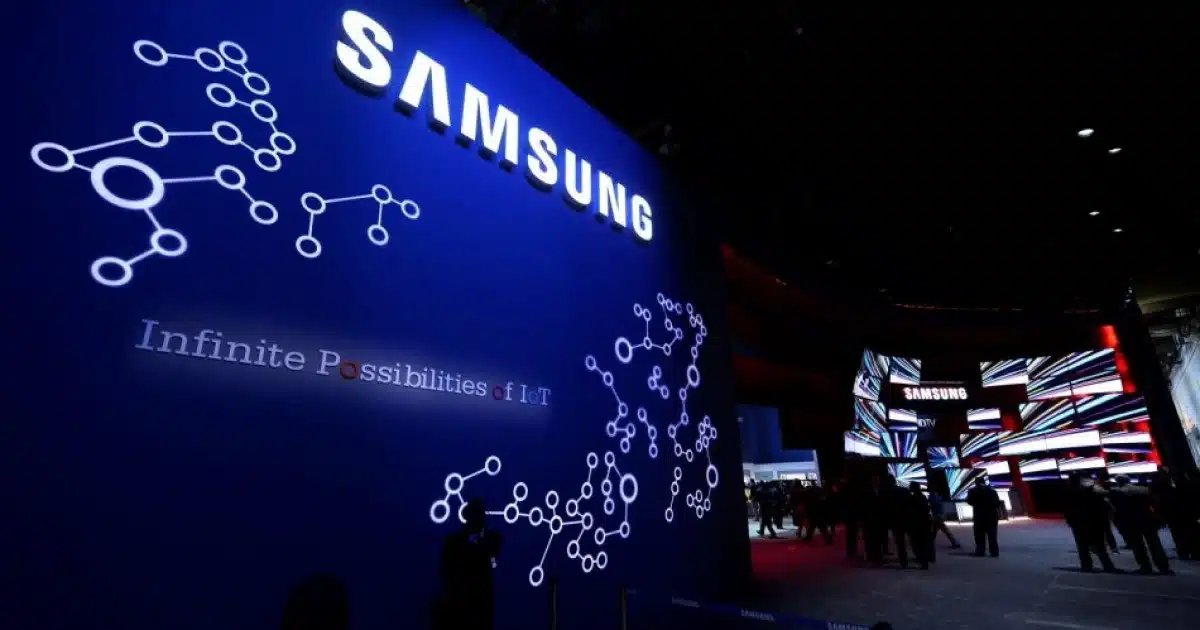Samsung’s Chip Division Faces Challenges

Samsung Electronics Co. is grappling with significant challenges in its semiconductor division. The company reported a profit that fell short of expectations, highlighting the intense competition in the artificial intelligence (AI) sector. As Samsung strives to catch up with its main rival, SK Hynix Inc., it is increasing its research and operating costs. This article delves into the current state of Samsung’s chip division, the impact of its financial performance, and the company’s strategic direction moving forward.
Financial Performance and Market Position
Samsung’s semiconductor unit reported an operating profit of KRW 2.9 trillion (approximately Rs. 17,301 crore) for the last quarter of the year. This figure was below analysts’ expectations, raising concerns about the company’s ability to compete effectively in the memory chip market. Despite a net income of KRW 7.58 trillion (around Rs. 45,235 crore), bolstered by its network business, the semiconductor division’s struggles are evident.
The company’s stock price fell by 2.4 percent following the announcement, reflecting investor concerns. SK Hynix also experienced a significant drop in its shares, down 9.9 percent. This decline is partly attributed to fears that new low-cost AI solutions could disrupt the demand for high-end chips and datacenters. Samsung’s executives acknowledged that the first quarter of the year would likely see limited earnings growth due to ongoing U.S. export restrictions on AI chips. These restrictions are expected to weigh heavily on the company’s performance until memory chip demand begins to recover in the second quarter.
Strategic Shifts in Research and Development
In response to the competitive landscape, Samsung is ramping up its research and development efforts. The company plans to maintain its capital expenditures at KRW 53.6 trillion (approximately Rs. 3,20,391 crore) for 2024. This investment aims to enhance its capabilities in high-bandwidth memory (HBM) products, particularly the newly approved 8-layer HBM3E chips. These chips are less advanced than those offered by SK Hynix but are crucial for AI processors in the Chinese market.
Samsung’s executives have indicated a strategic pivot away from conventional DRAM and NAND memory for PCs and mobile devices. Instead, the focus will shift toward higher-margin segments such as server DRAM and HBM, where demand remains robust. The company is also reorganizing its engineering teams to accelerate the development of the next generation of HBM chips, known as HBM4. This move is essential for Samsung to regain its footing in the competitive memory chip market.
Challenges Ahead and Market Dynamics
Despite its efforts, Samsung faces significant hurdles in the high-bandwidth memory market. The company has struggled to achieve timely certification for its latest products from Nvidia, allowing rivals like SK Hynix and Micron Technology Inc. to gain a competitive edge. As the demand for memory chips becomes increasingly commoditized, Samsung’s ability to innovate and deliver high-quality products will be critical for its success.
Market analysts express cautious optimism about Samsung’s prospects. Homin Lee, a senior macro strategist at Lombard Odier, believes that while Samsung can recover in its HBM business, it must achieve commercial breakthroughs with leading AI companies. Time is of the essence, as competitors are rapidly advancing in the DDR5 segment, despite export controls.
Samsung’s recent announcement of a stock buyback plan worth KRW 10 trillion (approximately Rs. 59,667 crore) indicates its commitment to enhancing shareholder value. However, the company must navigate the challenges in its semiconductor division to ensure long-term growth and stability.
Observer Voice is the one stop site for National, International news, Sports, Editor’s Choice, Art/culture contents, Quotes and much more. We also cover historical contents. Historical contents includes World History, Indian History, and what happened today. The website also covers Entertainment across the India and World.

